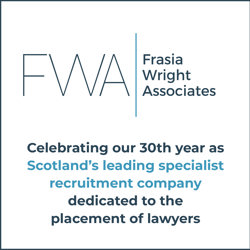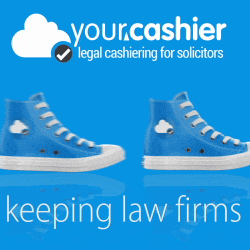How to avoid solicitors' hidden bias — practical techniques for everyday use

Anna Ziarkowska explains why recognising cognitive bias is a professional necessity, and shares practical tips for effective self-reflection.
Lawyers are trained to think – rigorously, logically and often under pressure. We pride ourselves on precision and objectivity. Yet even the most rational legal mind is not immune to the quirks of human psychology. The truth is that we all reason through a brain built for survival not pure logic. Understanding how we think – and how we sometimes misthink – can make us better lawyers.
Psychologists call this metacognition: the ability to think about our own thinking. It’s what allows us to stand back, notice our mental processes and ask, “What might I be missing?” For a profession built on judgement, this skill is not academic theory – it’s a practical necessity.
The illusion of rationality
From the outside, legal work looks like a triumph of reason: evidence in, arguments out. In reality, our reasoning is influenced by unconscious shortcuts known as cognitive biases. These biases are not a sign of weakness or lack of training. They are automatic mental habits that evolved to help humans make quick decisions in a complex world. The problem is that law demands accuracy, consistency and fairness – conditions under which these shortcuts can backfire.
Confirmation bias makes us seek out information that supports what we already believe and ignore what challenges it. A solicitor convinced a claim will succeed may interpret each new fact in that light, missing early warning signs that the case is weaker than assumed.
Anchoring bias causes the first number, offer or piece of information we encounter to heavily influence our subsequent judgements. The first settlement figure mentioned in negotiation – even if unrealistic – can set the psychological ‘anchor’ around which all later discussion revolves.
Overconfidence bias leads experienced professionals to overestimate the accuracy of their judgements. Lawyers are particularly vulnerable because confidence is often equated with competence. But the line between professional assurance and cognitive overconfidence can be thin.
Biases like these shape not just individual reasoning but collective decision-making within teams and firms. Recognising their presence is the first step toward reducing their influence.
Metacognition: the lawyer’s second mind
Metacognition – thinking about thinking – is essentially self-awareness applied to reasoning. It is the quiet voice that asks, “How do I know this is true?” or “What evidence might disprove my assumption?” It involves two processes: monitoring (noticing what we are thinking) and control (adjusting how we think when we spot an error).
In legal practice, metacognition can be transformative. It allows a lawyer to notice when emotion, habit or fatigue are steering a decision. It helps in drafting advice that clearly separates what is fact, what is inference and what is judgement. It enables us to manage client expectations more realistically by recognising when our optimism is psychological rather than evidential.
Importantly, metacognition does not mean endless self-doubt. It’s not about paralysis or second-guessing every instinct. Instead, it’s a discipline of periodic reflection – stepping back at key moments to ask the right questions before acting.
How cognitive bias plays out in legal life
These biases can creep into almost every aspect of practice. Consider three familiar examples:
- Case assessment – A lawyer reviewing a new matter might feel certain from the outset that a client’s claim is strong. As evidence arrives, they unconsciously give more weight to what supports that belief and less to what undermines it. The result: costly overconfidence, late realisation of weakness and missed opportunities for early settlement.
- Negotiation – Anchoring often dominates settlement discussions. If the other side opens with a low figure, even experienced negotiators can find their counter-offers unconsciously drawn toward that ‘anchor’. Understanding this bias allows lawyers to prepare psychological countermeasures – for example, by setting pre-defined valuation ranges or rehearsing neutral responses to extreme offers.
- Client Advice – When clients seek reassurance, lawyers can be nudged toward the answer the client wants to hear. The social pressure to please can subtly distort our neutrality. Metacognitive awareness helps lawyers recognise when rapport is tipping into bias, allowing advice to stay balanced without losing empathy.
Practical techniques for everyday use
Awareness of bias is important, but awareness alone is not enough. The next step is to design habits that bring psychological insight into daily professional practice.
Pause before big decisions
In a fast-moving practice, reflection time can feel like a luxury. But research shows that even a brief deliberate pause before key choices – case strategy, settlement, recruitment – significantly reduces bias. The act of slowing down interrupts automatic thinking and allows analytic reasoning to re-engage. Before a major decision, take one minute to write down what outcome you expect and why. Revisit it later – the gap between expectation and result is your best teacher.
Invite constructive challenge
Bias thrives in silence. Seek out a colleague willing to question your assumptions. The ‘devil’s advocate’ method is one of the simplest and most effective forms of bias control. Encourage them to argue the opposite case robustly. If your reasoning holds up, you gain confidence; if not, you gain foresight.
Use cognitive checklists
Borrow a technique from aviation and medicine. A brief checklist at key moments (What assumptions am I making? Have I considered disconfirming evidence? Could I be anchored by initial information?) externalises the thinking process. It prevents overconfidence by making invisible reasoning visible.
Reflect after outcomes
After a case concludes, take five minutes to review not just what happened but how you thought. Did early impressions steer later reasoning? Was there a moment when emotion overtook evidence? Keeping a brief reflective log can gradually sharpen intuition without formal training.
Beyond the individual: bias in legal teams
Metacognition isn’t just for individuals, it’s a team skill. Collective decision-making can amplify bias if everyone shares the same assumptions. Encouraging dissenting views, rotating who summarises evidence or having one person play ‘client advocate’ in internal discussions are small cultural changes that promote cognitive diversity.
Firms that normalise reflection – asking, “What might we be missing?” before major decisions – reduce risk and improve collective accuracy. In-house teams, where commercial and legal priorities often compete, benefit particularly from metacognitive discussion. It allows members to separate legal risk from organisational preference, making advice clearer and more balanced.
Why this matters
In law, judgement is our product. We can’t remove bias entirely, but we can manage it consciously. Thinking about thinking helps ensure our professional reasoning stays anchored in evidence rather than instinct. It protects us from overconfidence, improves client trust and upholds ethical standards by exposing the mental processes behind our advice.
In short, psychology doesn’t replace legal training – it refines it. The lawyer who understands both the law and the human mind stands on firmer professional ground.
A reflective practice for this month: pause and check
Before finalising a significant piece of advice or entering a negotiation, take 60 seconds to write down your initial view and the key reasons behind it. Then, ask yourself:
- What evidence could challenge this view?
- Have I been influenced by first impressions or client expectations?
- What would a colleague with a different perspective say?
Return to your note after the outcome – what you learn from that comparison will strengthen your future judgement more than any textbook.
Written by Anna Ziarkowska, an EU/UK solicitor and psychology student






